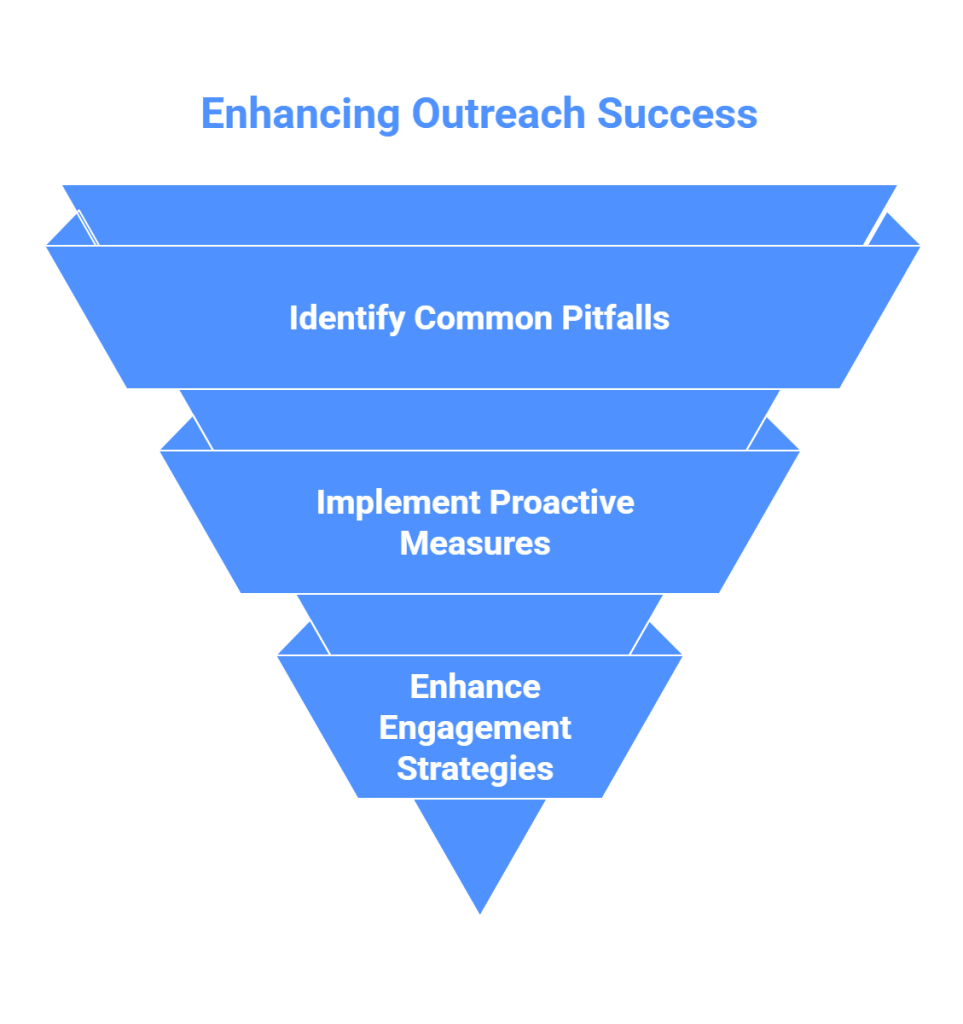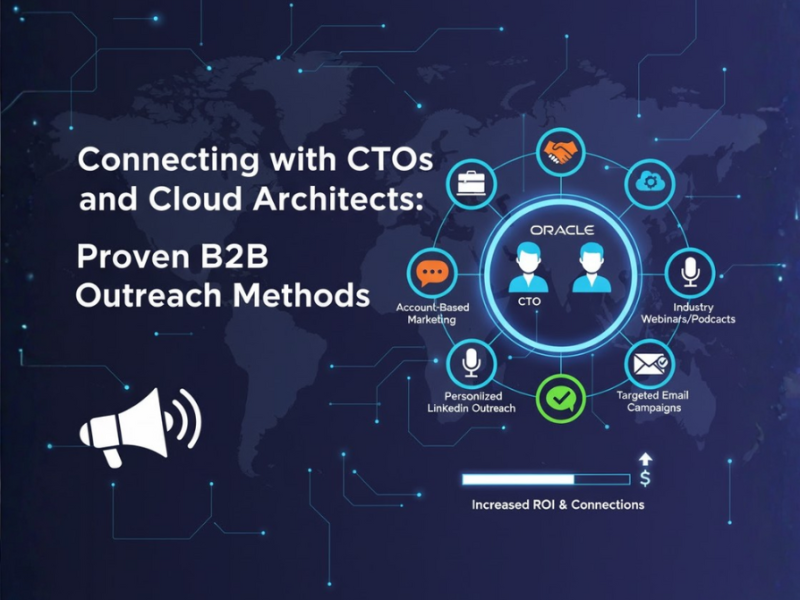You’ve just invested a significant portion of your marketing budget in a premium NetSuite users list, expecting a flood of new leads. But weeks into your outreach campaigns, the results are underwhelming: low open rates, high bounce rates, and replies that miss the mark entirely. What went wrong?
This frustrating scenario is all too common. While a high-quality list of NetSuite customers is a powerful asset, its value is often squandered by common, yet avoidable, mistakes. The problem isn’t the list; it’s the lack of a sound strategy for using it.

This article outlines the five most critical pitfalls in using a NetSuite users list for B2B outreach and provides a strategic framework to ensure your campaigns deliver the marketing ROI you expect.
Pitfall #1: Treating the List as Gospel (The Data Accuracy Trap)
The first and most fundamental error is assuming a purchased list is 100% accurate and up-to-date from day one. In the dynamic B2B world, employees change roles, get promoted, leave companies, and data becomes stale with alarming speed.
Why It’s a Pitfall: Relying on unverified data has immediate and damaging consequences. High email bounce rates harm your domain’s sender reputation, increasing the risk that even your valid emails land in spam folders. You waste valuable time and marketing dollars pursuing contacts who are no longer relevant, and your SDRs burn hours on outreach destined to fail.
How to Avoid It:
- Implement a multi-step verification process: Before launching any outreach campaigns, run your list through a reputable email verification tool (like ZeroBounce or NeverBounce) to scrub invalid addresses.
- Cross-reference with professional networks: Mandate a quick “verification check” on LinkedIn for high-value targets. This simple step can confirm a contact’s current role and company before the first email is even sent.
- Choose reputable data providers: Vet your vendors thoroughly. Ask them about their data collection and verification methods and look for providers who offer guarantees on data accuracy.
[Data] Consider this: with a typical B2B data decay rate of 25% annually, a 10,000-contact list could have 2,500 bad contacts after just one year. This isn’t just a list problem; it’s a significant financial drain on your sales prospecting efforts.
Pitfall #2: The One-Size-Fits-All Broadcast (The Personalization Failure)
Armed with a list of names and companies, many marketers make the mistake of crafting a single, generic message and blasting it to everyone. This one-size-fits-all approach is the fastest way to be ignored.
Why It’s a Pitfall: Today’s buyers are inundated with generic sales pitches. A message that doesn’t speak to their specific context is immediately identified as spam and deleted. This approach results in rock-bottom engagement rates and, more importantly, fails to build any meaningful connection between your brand and the specific challenges your prospects face.
How to Avoid It:
- Go beyond
{{first_name}}: True personalization leverages the data you have. Reference the prospect’s industry, company size, or a recent company announcement to show you’ve done your homework. - Role-based messaging: A CFO using NetSuite has vastly different priorities than an IT manager. The CFO is concerned with financial reporting and compliance, while the IT manager worries about integration, security, and uptime. Tailor your value proposition to resonate with the specific responsibilities of the person you’re contacting.
[Example] Instead of a generic opening like, “Our software can help your business,” try a targeted one: “For retail companies like yours using NetSuite ERP, managing multi-channel inventory is a common challenge. Our solution integrates seamlessly to solve that specific problem.”
Pitfall #3: The Unsegmented Blast (The Strategy Void)
Closely related to the failure of personalization is the failure to segment. Treating your entire NetSuite users list as one monolithic group is a massive strategic oversight that cripples the potential for effective outreach.
Why It’s a Pitfall: Without segmentation, you cannot perform targeted marketing. You miss invaluable opportunities to run highly relevant mini-campaigns that speak directly to the needs of a specific group. This makes it impossible to A/B test your messaging effectively or optimize your approach, leaving your lead generation efforts broad, inefficient, and far less impactful.
How to Avoid It:
- Segment by Firmographics: Start by grouping your list into logical cohorts. The most common and effective segments are by industry (e.g., Software & Tech, Retail, Manufacturing), company size (e.g., 50-200 employees, 201-1000 employees), and geographic location.
- Segment by Technographics (if available): If your data includes it, segmenting by the specific NetSuite modules a company uses can be incredibly powerful. A company using NetSuite CRM has different needs than one using NetSuite for Manufacturing.
- Create targeted mini-campaigns: Develop unique email sequences, content offers (like case studies), and value propositions for each of your key segments.
Pitfall #4: Ignoring the “Why Now?” (The Lack of Buying Intent)
A company’s presence on a NetSuite customers list confirms they use the platform. It does not confirm they are actively seeking a solution like yours at this very moment. Pitching aggressively to a contact with no immediate need is a surefire way to burn a future opportunity.
Why It’s a Pitfall: When your solution-focused pitch meets a prospect who has no active problem, it creates friction. You come across as tone-deaf and salesy. The lead, who might have been a perfect fit in six months, is now alienated and unlikely to engage with you in the future.
How to Avoid It:
- Use intent data overlays: To prioritize your outreach, consider using third-party intent data services. These tools can identify which companies on your list are actively researching keywords and topics related to your solution, signaling a potential buying window.
- Nurture, don’t just sell: For the contacts not showing active buying signals, enroll them in a long-term lead nurturing sequence. Instead of a hard sell, share valuable content—webinars, insightful articles, industry reports—to build credibility and stay top-of-mind.
- Monitor trigger events: Set up alerts for key events like expansions, funding rounds, or new executive hires (especially in relevant departments). These events often create new challenges and budget, opening the door for a timely and relevant conversation.
Pitfall #5: Disregarding Data Privacy (The Compliance Risk)
In the rush to launch outreach campaigns, it can be easy to overlook the complex web of data privacy regulations. This isn’t just a minor oversight; it’s a significant business risk.
Why It’s a Pitfall: Non-compliance with regulations like GDPR in Europe or CCPA in California can lead to staggering financial penalties. Beyond the fines, a violation can cause irreparable damage to your brand’s reputation and erode customer trust. In severe cases, it can even lead to your company’s email domain being blacklisted by internet service providers.
How to Avoid It:
- Understand your obligations: Know where your contacts are geographically located and ensure your marketing practices comply with the laws that govern their data.
- Ensure a Legitimate Interest: Under GDPR, your reason for contacting a prospect must be relevant to their professional role. Selling an HR tool to a Head of People is legitimate; selling it to a Chief Financial Officer may not be.
- Provide a clear opt-out: Every single communication must include a simple, obvious, and functional link for the recipient to unsubscribe from future messages.
[Data] Fines under GDPR can be up to 4% of a company’s global annual revenue. This pitfall doesn’t just hurt your campaign; it can pose an existential threat to your business.
Read More: Enhancing Business Opportunities With NetSuite
From Pitfalls to Performance
In summary, success with a NetSuite users list hinges on moving beyond the data itself. By validating its accuracy, committing to deep personalization, strategically segmenting your audience with data segmentation, timing your outreach with intent, and respecting data privacy, you transform a simple list into a powerful engine for growth. These steps separate amateur efforts from professional, high-return marketing ROI strategies.


